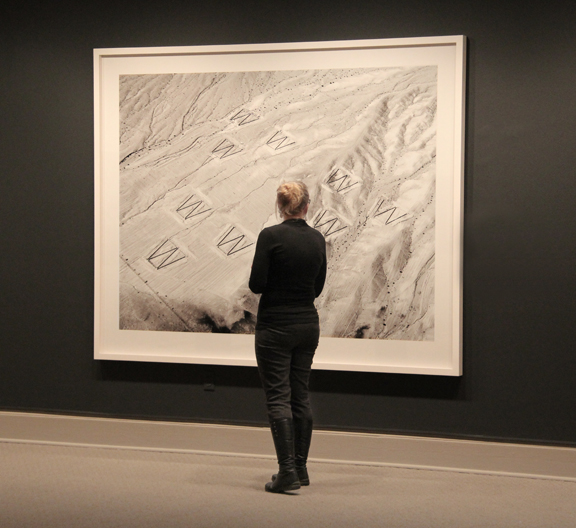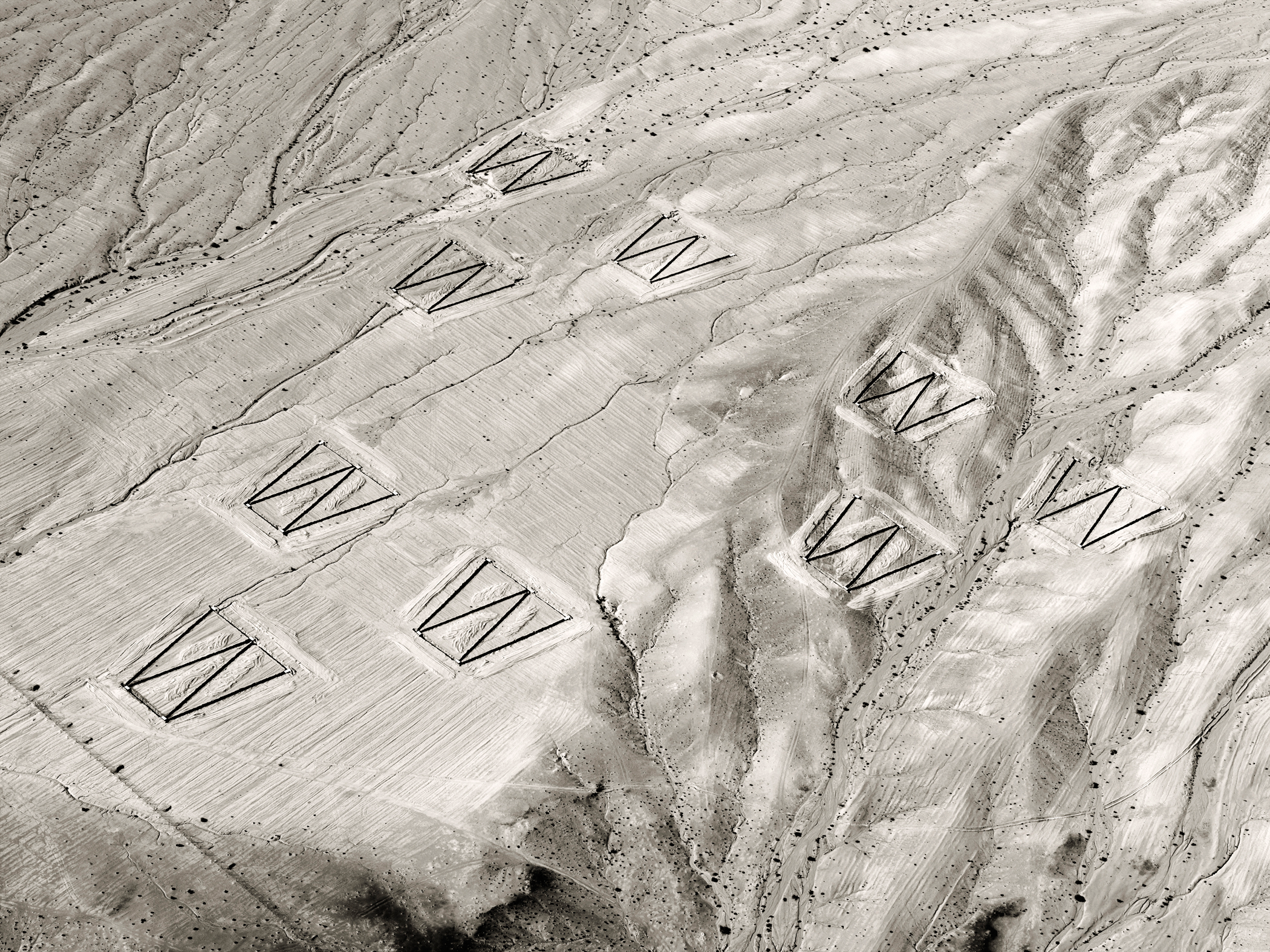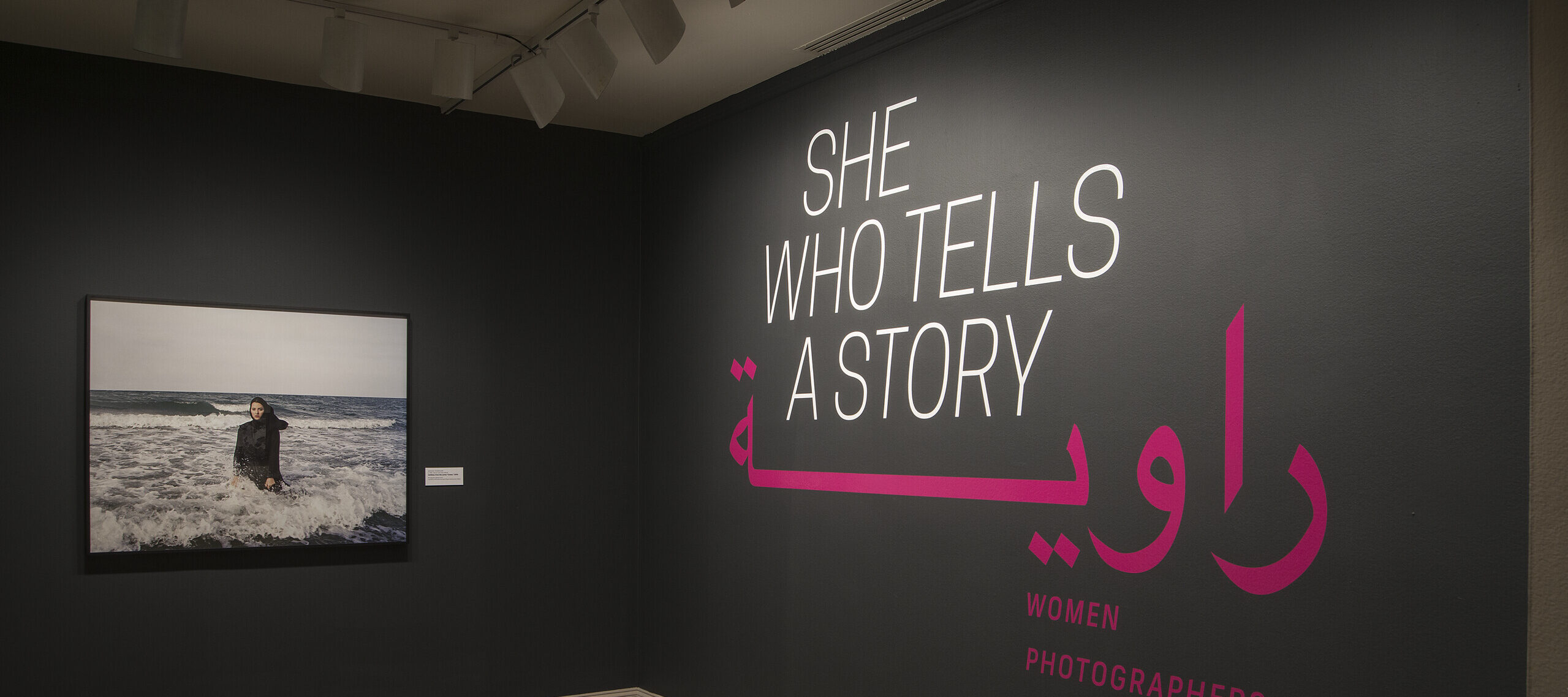In Arabic, the word rawiya means “she who tells a story.” Each artist in NMWA’s summer exhibition She Who Tells a Story: Women Photographers from Iran and the Arab World offers a vision of the world she has witnessed.

Jananne Al-Ani
(b. 1966, Kirkuk, Iraq; lives London)
Jananne Al-Ani is a photographer and video artist whose work has explored the representation and conspicuous absence of the human body. Earlier in her career, she created work that depicted veiled women, examining stereotypes of Orientalism and cultural identity. More recently, Al-Ani has focused on landscapes, using aerial video and photography to show ambiguous sites with traces of inhabitation or seeming abandonment.
In Her Own Words
“The media coverage of the 1991 Gulf War, which focused on aerial and satellite images of a depopulated, barren landscape, had a major impact on my work. What followed was a reassessment on my part of the work of Orientalist painters and the way in which fantasies about the body and the landscape of the Middle East were constructed in their works. I began to see the body itself as a contested territory and during the 90s produced a series of works that attempted to counter the European obsession with uncovering and exposing the bodies of veiled women. More recently, with the Aesthetics of Disappearance project, I’ve attempted to re-occupy that space so, while the presence of the body is implied rather than explicit, the traces of human activity in the landscape are clear to see.”—Jananne Al-Ani, interview with Nat Muller in Ibraaz
What’s On View?

Al-Ani’s photograph Aerial I is a still image from her film Shadow Sites II, which in turn is part of her project The Aesthetics of Disappearance: A Land Without People. She explains, “The actual term ‘shadow site’ is borrowed from the field of aerial archaeology and refers to the practice of surveying landscapes from the air at dawn or dusk when the raking light serves to reveal low-lying features on the ground—details that would otherwise remain invisible.”
She was inspired by Edward Steichen’s WWI reconnaissance photography, which she saw as “strikingly beautiful images of landscapes obliterated by shelling and criss-crossed by trenches, but abstracted to such a degree as to have become exquisite and minimal works of art.” For this work, which depicts southern Jordan, she emphasizes the image’s ambiguity. Al-Ani says, “My guiding preoccupation was with the ways that the evidence of atrocity and genocide haunts the often beautiful landscapes into which the bodies of victims disappear.”
Visit the museum and explore She Who Tells a Story, on view through July 31, 2016.
